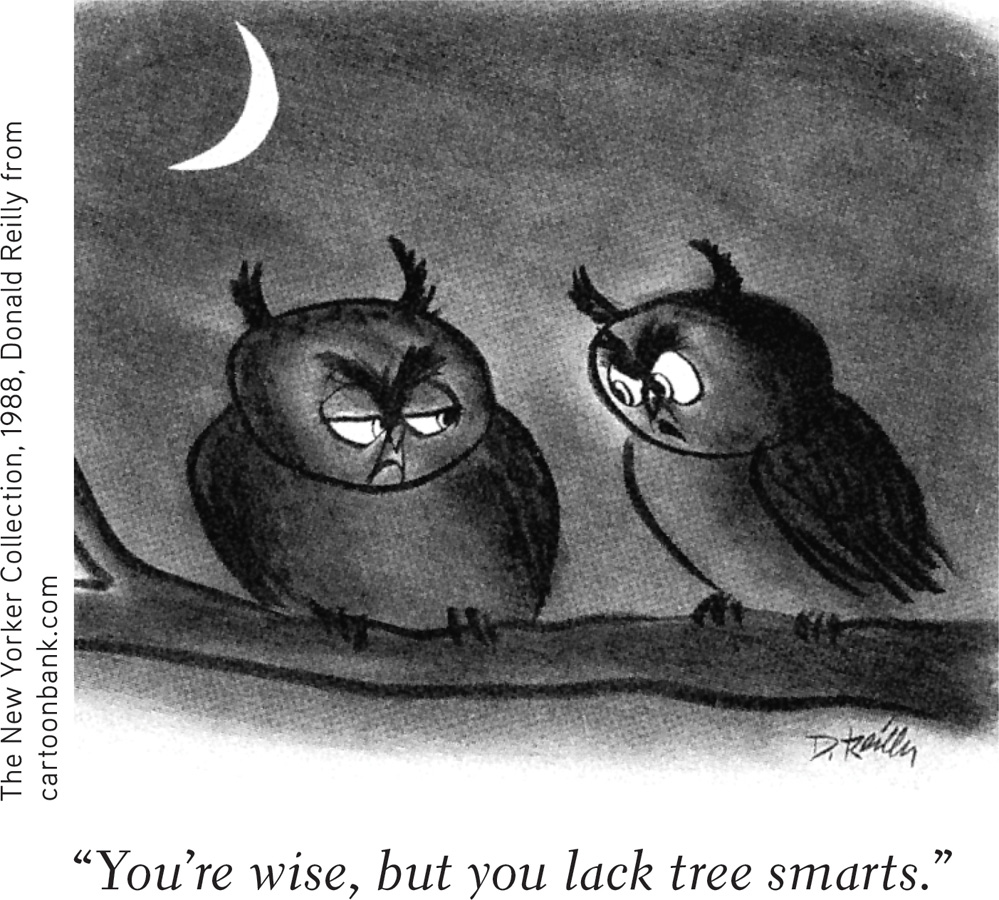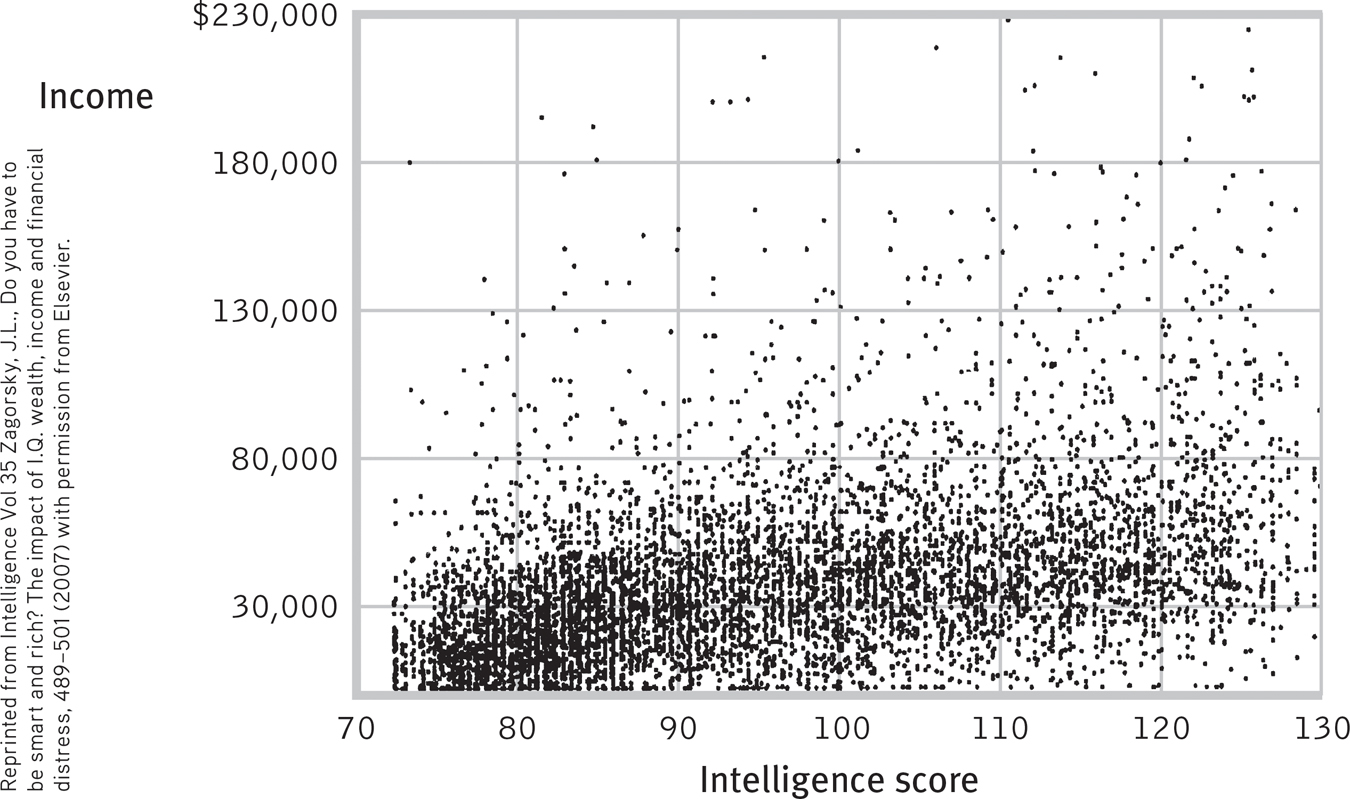29.2 Theories of Multiple Intelligences
29-
Other psychologists, particularly since the mid-
Gardner’s Multiple Intelligences
Howard Gardner has identified eight relatively independent intelligences, including the verbal and mathematical aptitudes assessed by standard tests (FIGURE 29.1). Thus, the computer programmer, the poet, the street-

 Figure 29.1
Figure 29.1Gardner’s eight intelligences Gardner has also proposed a ninth possible intelligence—
Gardner (1983, 2006; 2011; Davis et al., 2011) views these intelligence domains as multiple abilities that come in different packages. Brain damage, for example, may destroy one ability but leave others intact. And consider people with savant syndrome. Despite their island of brilliance, these people often score low on intelligence tests and may have limited or no language ability (Treffert & Wallace, 2002). Some can compute complicated calculations quickly and accurately, or identify the day of the week corresponding to any given historical date, or render incredible works of art or musical performance (Miller, 1999).
About 4 in 5 people with savant syndrome are males, and many also have autism spectrum disorder (ASD), a developmental disorder. The late memory whiz Kim Peek (who did not have ASD) inspired the movie Rain Man. In 8 to 10 seconds, he could read and remember a page. During his lifetime, he memorized 9000 books, including Shakespeare’s works and the Bible. He could provide GPS-
388

Sternberg’s Three Intelligences
“You have to be careful, if you’re good at something, to make sure you don’t think you’re good at other things that you aren’t necessarily so good at…. Because I’ve been very successful at [software development] people come in and expect that I have wisdom about topics that I don’t.”
Philanthropist Bill Gates (1998)
Robert Sternberg (1985, 2011) agrees with Gardner that there is more to success than traditional intelligence and that we have multiple intelligences. But his triarchic theory proposes three, not eight or nine, intelligences:
- Analytical (academic problem-solving) intelligence is assessed by intelligence tests, which present well-
defined problems having a single right answer. Such tests predict school grades reasonably well and vocational success more modestly. - Creative intelligence is demonstrated in innovative smarts: the ability to generate novel ideas.
- Practical intelligence is required for everyday tasks that are not well-
defined, and that may have many possible solutions. Managerial success, for example, depends less on academic problem- solving skills than on a shrewd ability to manage oneself, one’s tasks, and other people. Sternberg and Richard Wagner (1993, 1995; Wagner, 2011) offer a test of practical managerial intelligence that measures skill at writing effective memos, motivating people, delegating tasks and responsibilities, reading people, and promoting one’s own career. Business executives who score relatively high on this test tend to earn high salaries and receive high performance ratings. 
With support from the U.S. College Board (which administers the widely used SAT Reasoning Test to U.S. college and university applicants), Sternberg (2006, 2007, 2010) and a team of collaborators have developed new measures of creativity (such as thinking up a caption for an untitled cartoon) and practical thinking (such as figuring out how to move a large bed up a winding staircase). These more comprehensive assessments improve prediction of American students’ first-
389
Gardner and Sternberg differ on specific points, but they agree on two important points: Multiple abilities can contribute to life success, and differing varieties of giftedness add spice to life and challenges for education. Under their influence, many teachers have been trained to appreciate such variety and to apply multiple intelligence theories in their classrooms.

Criticisms of Multiple Intelligence Theories
Wouldn’t it be nice if the world were so just that a weakness in one area would be compensated by genius in another? Alas, say critics, the world is not just (Ferguson, 2009; Scarr, 1989). Research using factor analysis confirms that there is a general intelligence factor (Johnson et al., 2008): g matters. It predicts performance on various complex tasks and in various jobs (Gottfredson, 2002a,b, 2003a,b; see also FIGURE 29.2). Much as jumping ability is not a predictor of jumping performance when the bar is set a foot off the ground—

 Figure 29.2
Figure 29.2Smart and rich? Jay Zagorsky (2007) tracked 7403 participants in the U.S. National Longitudinal Survey of Youth across 25 years. As shown in this scatterplot, their intelligence scores correlated +.30, a moderate positive correlation, with their later income. Each dot indicates a given youth’s intelligence score and later adult income.
390

Even so, “success” is not a one-
RETRIEVAL PRACTICE
- How does the existence of savant syndrome support Gardner’s theory of multiple intelligences?
People with savant syndrome have limited mental ability overall but possess one or more exceptional skills, which, according to Howard Gardner, suggests that our abilities come in separate packages rather than being fully expressed by one general intelligence that encompasses all of our talents.